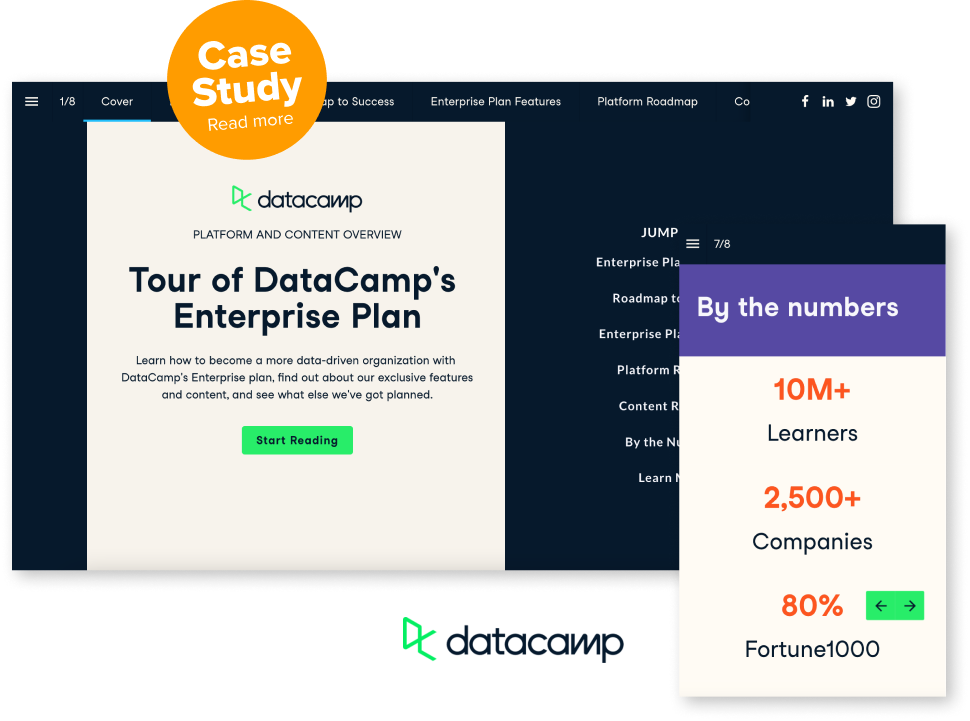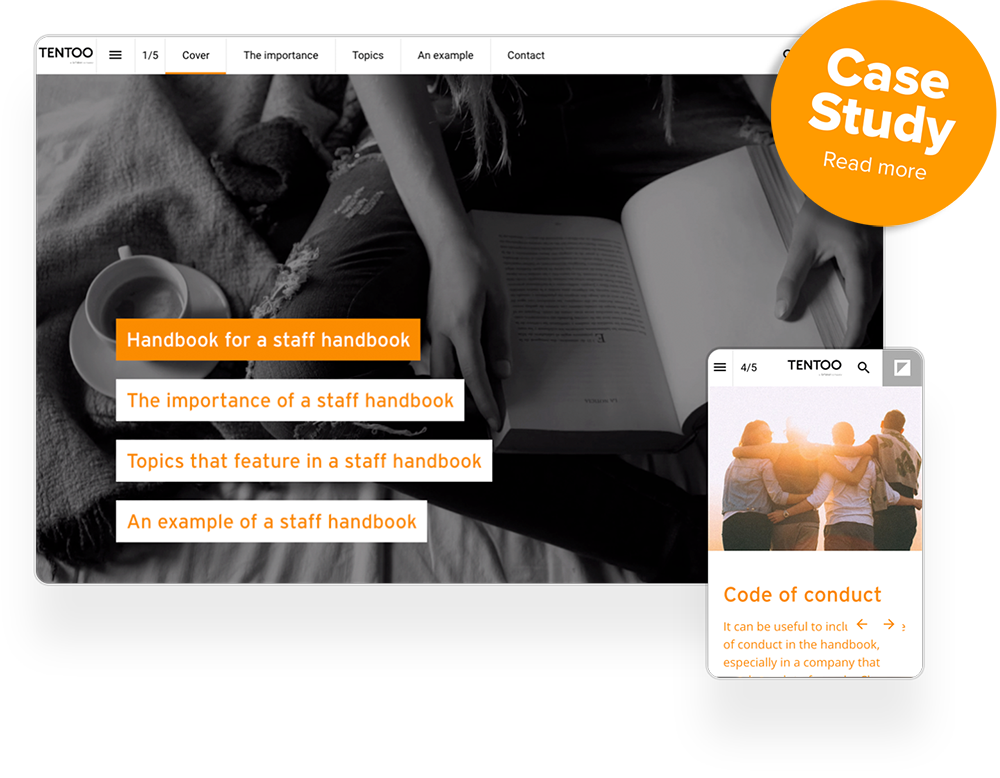Introduction
The University of Waterloo, located in southwestern Ontario, Canada, is home to over 42,000 students and 5,000 faculty members. It offers a vibrant learning environment across a wide range of disciplines, such as engineering, mathematics, health, environment, and arts.
At the heart of the university's communication efforts is the Creative Studio, a team dedicated to crafting compelling content for diverse audiences.
We spoke with Christine Goucher, Creative Director at the University of Waterloo, to understand the challenges they faced due to their audience's changing interests and content expectations. We also discussed how they've achieved remarkable success with Foleon since starting to use the platform in 2020.
Watch the video or read more below:
So far to date, University of Waterloo has:
"Foleon makes publishing content very easy. It allows movement, animation, and video to be embedded into the experience, which is an easy way to move people from that piece to your website. Being able to create content that engages and delights the audience is the key to creating a long-lasting relationship."
 Christine Goucher
Christine Goucher
Creative Director at the University of Waterloo
A changing landscape in Higher Education:
Christine's team, the Creative Studio, caters to various audiences, each with unique needs.
Prospective Students need to be approached creatively. As Christine says, "Content can make a big difference in our industry when it comes to engaging our prospective student audience and impacting enrollment."
Maintaining strong relationships with alumni requires a sense of community to encourage continued engagement and philanthropy.
And finally, inspiring potential donors with impactful content is essential for securing funding that supports innovative research and educational initiatives.
The way universities create and share content for these audiences is undergoing a dramatic shift. Christine emphasizes this: "In the post-secondary landscape (i.e., the higher education industry), we have three big challenges when creating content. One would be creating content that truly stands out among our audiences."
Here are three key trends shaping the content creation landscape in higher education identified by Christine:
1. Personalization: today's audiences crave content tailored to their specific interests and needs. "Everybody wants to be able to customize content," says Christine. Universities must move beyond generic messaging and provide targeted content that resonates with individual users.
2. Interactive information: static text and images are no longer enough to capture attention. Interactive elements can make content more engaging and memorable. Christine highlights this trend: "Things like quizzes and polls really engage our audiences."
3. Video and animation: video is a powerful storytelling tool, and audiences increasingly expect dynamic and visually appealing content. "There's just an insatiable desire for videos at this time," Christine observes.
Recognizing these trends, the University of Waterloo understood the need for a solution that would enable them to create content that aligns with their audiences' evolving expectations. This realization led them to explore digital publishing platforms like Foleon, ultimately transforming their content creation strategy.
A need for digital and print content to coexist
The COVID-19 pandemic was a major catalyst for change at the University. Their traditional reliance on print materials only for content creation became a significant hurdle in a world suddenly focused on digital interaction.
Christine Goucher describes their challenges: "At that time, it was pretty scary. Everybody was moved home. We were working online. We had no space to move our materials from print to digital."
The need for a digital solution became clear. As Christine puts it, "We needed a way to create content to engage with mostly prospective students to start. And we did that by implementing Foleon, which we could do very quickly and use seamlessly to create pieces that we could then continue to engage with our prospective students."
Beyond the pandemic, the University needed a solution that would allow them to adapt to the "new normal." Evolving audience habits and desires demanded a content creation that would make print and digital co-exist. As Christine recalled, the goal was to find a balance between print and digital that would allow us to meet everyone where they expect to be met.
In essence, the pandemic was a wake-up call, highlighting the limitations of a print-only approach and pushing the University of Waterloo to embrace digital content creation in combination with printed content. They needed a solution to solve the immediate crisis and future-proof their content strategy.
Finding the right solution
The University started looking for the perfect solution to meet its evolving needs. Christine shed light on their evaluation process.
A user-friendly platform was essential. Many different people would be brought to create content, and they needed something that would be easy to use for anyone. As Christine emphasizes, "The features that were most important to us when we were deciding on Foleon included the fact that we could bring it in-house and publish a piece right away. It was a very quick learning curve."
Data security was a non-negotiable aspect. Christine highlights this concern: "We were also working with our own IT department to ensure the safety and type of content was appropriate and couldn't be hacked, to make that safe for our prospective students and families, our donors, our government and industry leaders."
Ultimately, Foleon's combination of user-friendliness, robust security, and feature-rich environment made it the clear choice for the University of Waterloo.
The result: five awards for their Foleon Docs
The University of Waterloo's content creation with Foleon has been a resounding success. Since 2020, they've leveraged the platform to create over 50 active Foleon Docs.
The quality of their Foleon-created content has been recognized by prestigious institutions. In the last three years alone, the University received five awards for their Foleon Docs:
- The Canadian Council for the Advancement of Education (CCAE) awarded them the Best Report to Donors gold award for their Report on Giving 2021-2022.
- The Communicator Awards gave them the Award of Excellence 2023 for their Health in 3D report.
- Council for Advancement and Support of Education (CASE) 2022 awarded them the Circle of Excellence Gold and the 2022 Best of CASE District II Award for New Alumni Engagement with their Alumni handbook.
- The Council for Advancement and Support of Education (CASE) 2021 gave them the Best of CASE District II Award for Quantum Impact Report.
Organizations like CCAE and CASE are highly respected in the educational advancement sector. Their recognition validates the quality of content produced by the University of Waterloo with Foleon.
For example, the University of Waterloo's Report on Giving 2021-2022 receiving this award demonstrates how institutions can create compelling content that resonates with donors and fosters continued engagement with the help of Foleon.
Similarly, the CASE awards include many categories, including alumni relations and publications. The University's success in these categories signifies Foleon's versatility in supporting the creation of award-winning content across various communication channels and use cases.
If you'd like to discover more use cases that you could explore with Foleon, explore our content compass to get inspired on what you can achieve with Foleon.












